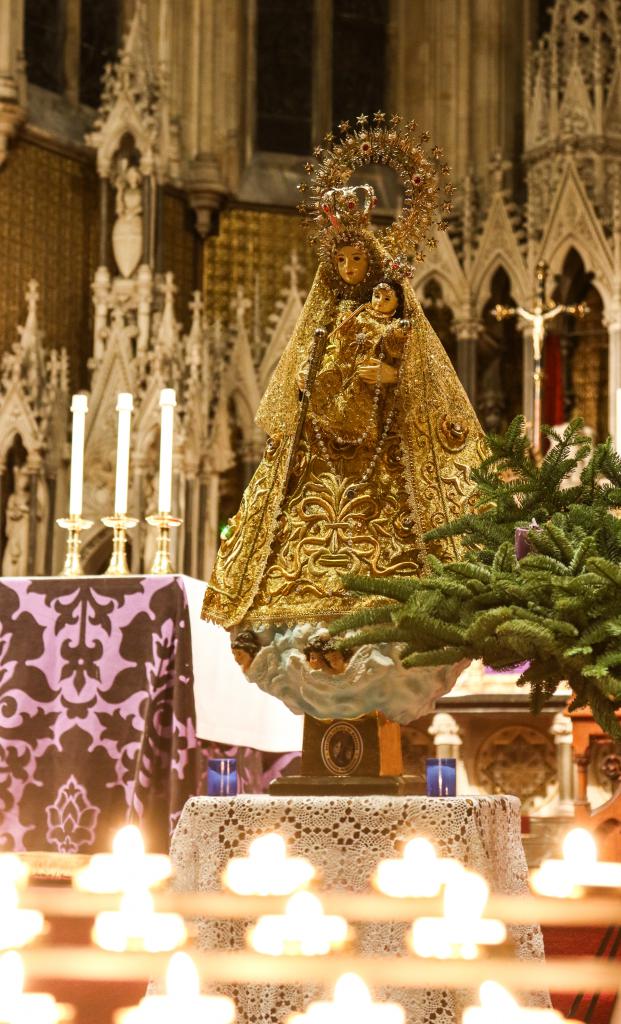by Fr Lawrence Lew OP
Over a decade ago I served as a lay missionary in a Dominican parish located amid the slums of Metro-Manila. My first Advent there, I was introduced to Simbang Gabi, which seemed to me, to herald in Christmas with a bang, as the name seemed to imply! At around 4am, I would be woken up by Christmas carols broadcast throughout the neighbourhood on loudspeakers, and as the Gloria was sung, the general festivity would be accompanied by the banging of drums. I tried for the first few mornings to cover my head with a pillow and go back to sleep, but I soon decided to join in the festivities; after all, there were nine mornings of these exuberant Masses which I simply could not ignore! I soon learnt to embrace these unusual Masses, and joined the thousands of people who thronged to church and stood outside in the dark and cool mornings before the crack of dawn. After Mass, street vendors would sell breakfast and sweet delicacies that are only eaten at this time of year, and there was much camaraderie and joy; as we read in the Scriptures, an agape meal was shared by the Christian community after they had gathered for Mass and Holy Communion.
The name Simbang Gabi, means, literally ‘night-time church’ because the original intent was to attend church sometime after nightfall. The Spanish missionaries who brought the faith to the Philippines had a custom of praying a novena (nine-days) of devotions dedicated to the pregnant Mother of God, and these took place in the nine evenings before Christmas. However, noticing that the people were tired in the evenings after a whole day’s toil in the fields, the priests began to adapt this custom. Sometime around 1669, they decided instead to have a novena of Masses in the mornings, before daybreak, so that the people could go to work after Mass. The rich and sweet breakfast foods, therefore, gave them energy for their labours.
In fact, the missionaries were drawing upon a custom that can be traced to the eighth century. There was a Roman custom of offering a Rorate Mass before dawn on each of the seven days preceding Christmas and, from the 17th century onwards, a novena of these pre-dawn Masses in honour of the Blessed Virgin Mary and the nine months of her pregnancy became popular in Italy. The Simbang Gabi tradition, therefore, is deeply rooted in an ancient Catholic tradition.
In many places in non-agrarian societies such as ours in London, the Simbang Gabi Mass is celebrated in the evening, thus returning to its roots as a devotional practice of genuine night-time church-going. This novena of Masses remains a special way of accompanying the Blessed Mother in the last days of her pregnancy, of praying with her, and contemplating the wonder of the Incarnation with her. As such, it is especially fitting that the Diocesan Shrine of Our Lady of the Rosary should be the venue for a full nine-day novena of Simbang Gabi Masses.
In the Philippines, the Holy See has allowed for special Mass propers for Simbang Gabi, but here in London, the Masses will be celebrated in English, and they will be the proper Advent Masses of the day, beginning on the 15th of December and running nightly until the 23rd of December. Unlike the Philippines version, too, there will not be drums or the singing of the Gloria in anticipation of Christmas. However, a Filipino choir will sing traditional Filipino songs and Mass Ordinaries at each of these Masses, and Filipino priests have been invited to preach at the weekday Masses. And, importantly, just like in the Philippines, there will be plenty of food available after each of the Masses! It is hoped, therefore, that as in the Philippines so here in London a great multitude will throng with joy and devotion to Mama Mary’s Shrine for these Simbang Gabi Masses!
Novena of Simbang Gabi Masses at the Rosary Shrine: the Church of Our Lady of the Rosary and St Dominic, Southampton Road, London NW5 4LB (near Belsize Park or Chalk Farm):
Masses on weekends (15, 16, 22, and 23 Dec) start at 6pm.
Masses on weekdays (17-21 Dec inclusive) start at 7:30pm, with Filipino priests.
During these nine days the official replica statue of Our Lady of Manaoag will be displayed on the sanctuary of the church for veneration and the offering of prayer intentions.
Photo: Fr Lawrence Lew OP




